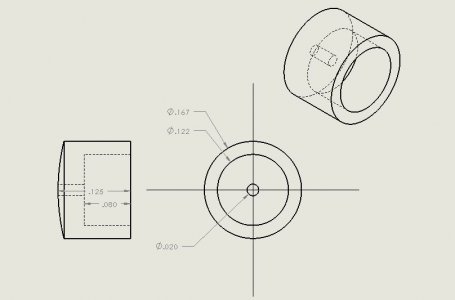- Joined
- Oct 16, 2017
- Messages
- 338
Have you looked into having the stock centerless ground?
I have not, I will though.
Have you looked into having the stock centerless ground?
I have a bunch of pieces to make from 1/2" diameter aluminum round rod. The rod must be sized to 0.495" +/1 0.002" in short sections. I have been doing this on the lathe but it is tedious work. Does anyone know of a tool that can be adjusted, run in the tail stock and over-ream to the required dimension? I have seen adjustable reamers for holes and am hoping such a tool exists that will work on the OD of round stock.
Here is what I would do. I would set up my carriage stop on the bed and make a suitable spacer. For a tool, I would use my parting tool. For a cutting depth of .0025" on aluminum, it will work for facing, turning and parting.
With the spacer in place, I would advance the stock to allow for a facing cut. Then I would remover the spacer and turn the o.d. to the stop where I would part off the piece. Advance the stock and repeat. It's fast and with care can easily meet your specs for length and o.d.
If finish on the face and/or part length is a concern, you can use a second op for facing the ends. A spindle stop will make that task easier. For facing, chuck runout won't be an issue so the three jaw chuck can be used.
I have used variations on this process many times for quickly making multiple parts.
Way back, I ran a turret lathe for most of a week (before quitting that job). I was too young and inexperienced to do anything but pull the handles.Here's a roller box turning tool
if a guy like me (who is fresh out of Box Tools) had a follow rest, can this be setup in a similar fashion and be useful to the original question in this thread? I have a follow rest with my lathe but in all my days, have never used one.

I'm going to have to play with my follow rest. This was of interest to me as the fellow used the compound to offset the cutting tool so the follow rest runs on the machined surface. Some of this stuff can be rather thought provoking. Which I enjoy even if I never use it.Yes. The biggest differences are the distance between the rollers and cutting tool and a follower rest runs on the finished diameter instead of original diameter. I've only used a follower rest a couple of times, but they can be very finicky. Mounting a cutting tool directly on the follower rest might work out.
